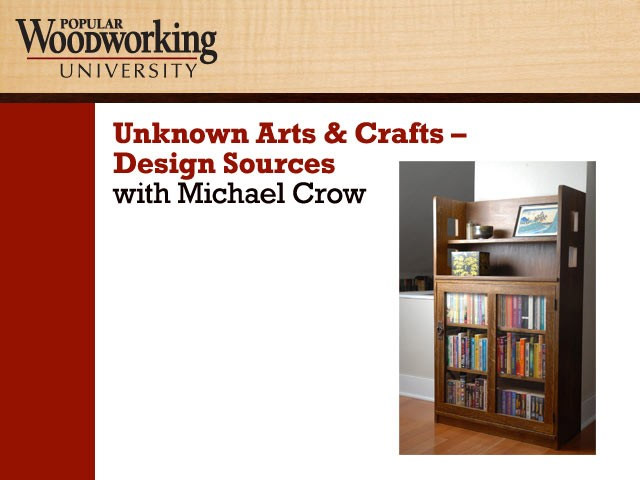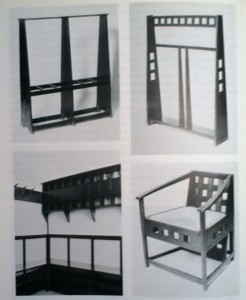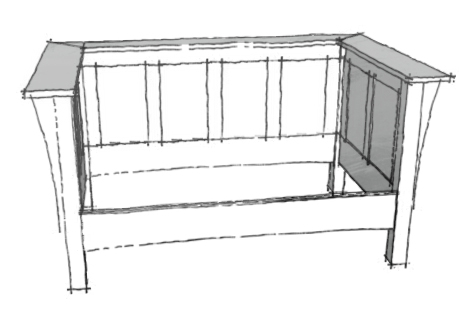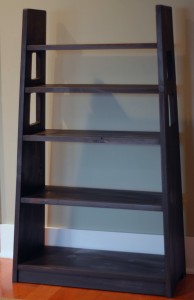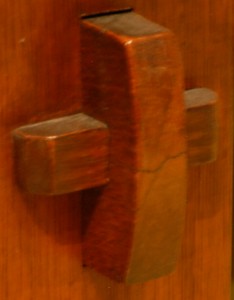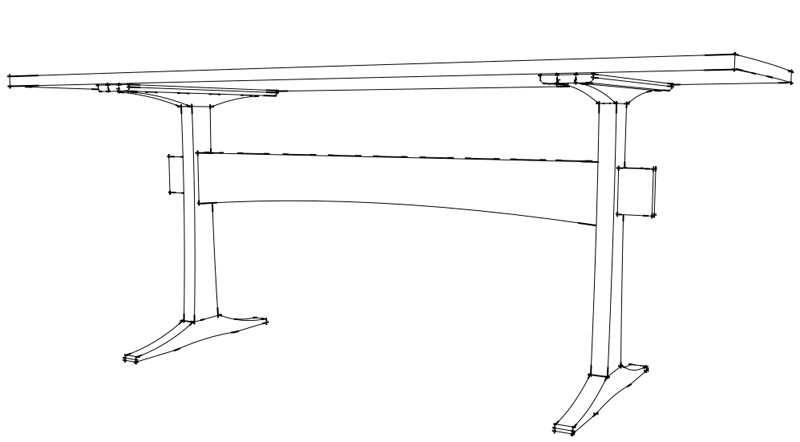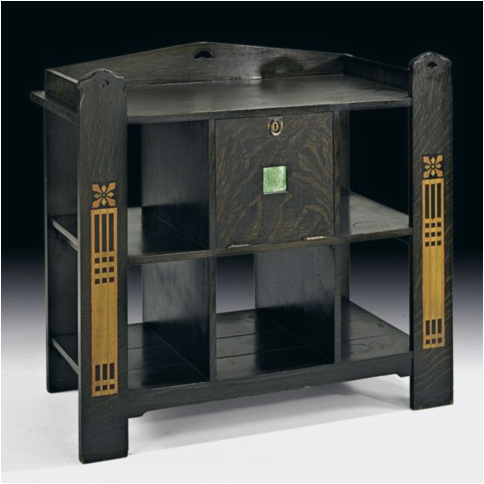
An Asian-inspired server by the Shop of the Crafters. Original auction posting at Liveauctioneers.
I’ve been researching furniture by various Arts & Crafts makers for my upcoming class on “Unknown Arts & Crafts” and came across this server by Cincinatti-based Shop of the Crafters. I would love to see the marketing material for the piece if it exists, since it might be the oddest server I’ve ever seen, beginning with the basic design and ending with the allusions to Chinese and Japanese forms. The server design eschews cupboards or drawers in favor of a grid of open shelves surrounding a single cupboard with a drop-front door decorated by an inset tile. The green of the tile calls to mind jade, and the ebonized finish evokes lacquerware. The cloudlifts on the front stretcher recur in Chinese furniture, and cutouts represent fans, another allusion to Asia. It’s a deliberate, if oddly mismatched effort to evoke Asia furniture, so the usual Shop of the Crafters inlay comes as a bit of shock, undermining the intent of the design.

